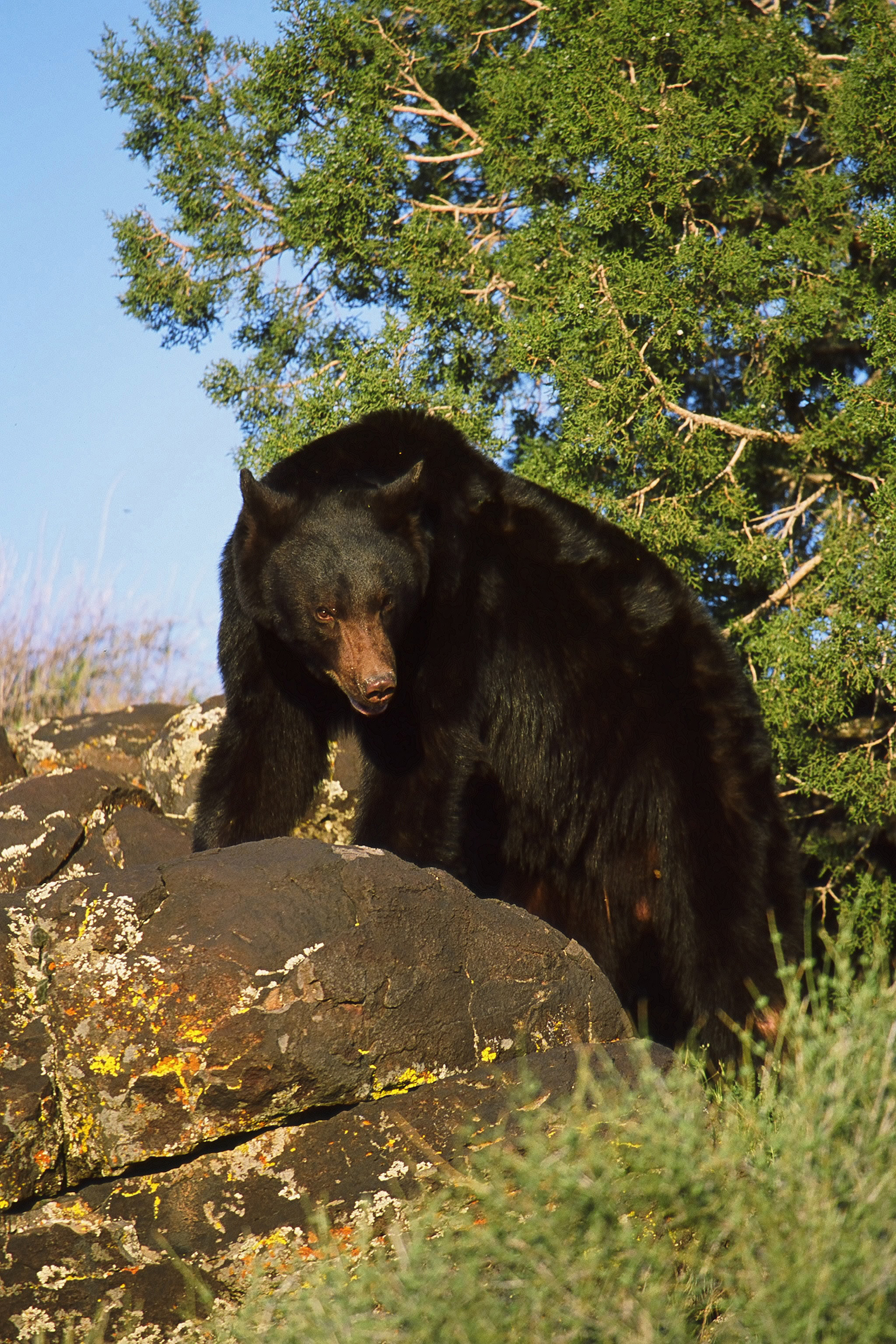http://www.stgeorgeutah.com/news/archive/2015/11/29/black-bear-population-healthy-growing-new-strategies-for-hunt/#.Vlxg9ISS4p8
SOUTHERN UTAH — A new black bear strategy, started in Utah in 2015, did exactly what wildlife managers hoped it would: It led to government agencies taking fewer bears and hunters taking more bears.
In 2014, hunters and government agencies took a total of 378 bears in Utah. In 2015, despite putting more hunters in the field, the number taken declined to 370.
Leslie McFarlane, mammals coordinator for Utah’s Division of Wildlife Resources, said biologists are happy with the results.

“The strategies implemented last year gave more hunters an opportunity to hunt while helping reduce the number of bears that have to be removed because they threaten people or kill livestock,” she said, “and it’s accomplishing that goal while keeping Utah’s black bear population at a healthy, balanced level.”
For all of those reasons, DWR biologists are recommending bear hunting strategies for 2016 that are identical to 2015. The strategy splits Utah’s bear hunt into six seasons held at various times in the spring, summer and fall.
Each season is unique. For example, during some hunts, hunters are allowed to hunt bears with trained hunting dogs that track and tree bears. During other hunts, hounds are not allowed. Instead, hunters must spot the bears and then try to move closer for a good shot.
Success rates vary, McFarlane said, depending on the time of year and the methods hunters are allowed to use. During some hunts, success rates are fairly high. During other hunts, rates are low.
“Because some of the success rates are fairly low,” she said, “we’ve been able to provide more chances to hunt without increasing the overall number of bears taken.”
The area where the strategy has made the biggest difference, McFarlane said, is the number of bears that have to be taken because they pose a threat to people or they’ve killed livestock.
“Putting more hunters in the field during different times of the year,” she said, “has helped decrease the number of bears that get into these situations.”
In 2014, the DWR and U.S. Department of Agriculture-Wildlife Services had to take 95 bears for public safety and livestock reasons.
In 2015, the number of bears taken for public safety and livestock reasons fell to 45 bears.
By comparison, the number of bears taken by hunters in 2014 was 283. In 2015, that number rose to 325.
DWR estimates the state’s bear population is growing at least 5 percent annually
Utah’s black bear population is healthy and growing, McFarlane said. Based on visits biologists make to bear dens in the winter, and data gathered from bears taken by hunters, the DWR estimates the state’s bear population is growing at least 5 percent annually.
In 2015, a total of 690 hunting permits were available. For 2016, biologists are recommending 722 permits.
“There were still some areas in Utah where bears got into trouble last year,” McFarlane said. “The increases we’re recommending for 2016 should help reduce problems in those areas in 2016.”
You can see the strategies in detail online.
Learn more, share your ideas
After you’ve reviewed the bear proposals, the public is invited to let their Regional Advisory Council members know their thoughts by attending upcoming RAC meetings or by sending them email.
RAC chairmen will share the input they receive with members of the Utah Wildlife Board. The board will meet in Salt Lake City Jan. 5 to approve rules for Utah’s 2016 black bear hunting and pursuit seasons.
RAC meetings are as follows:
- Southern region
- Dec. 8, 6 p.m.
- Snow College Administration Building, 800 W. 200 South, Richfield
- Southeastern region
- Dec. 9, 6:30 p.m.
- John Wesley Powell Museum, 1765 E. Main St., Green River
- Central region
- Dec. 2, 6:30 p.m.
- Springville Civic Center, 110 S. Main St., Springville
- Northern region
- Dec. 3, 6 p.m.
- Brigham City Community Center, 24 N. 300 West, Brigham City
- Northeastern region
- Dec. 10, 6:30 p.m.
- DWR Northeastern Region Office, 318 N. Vernal Ave., Vernal
To provide your comments to your RAC via email, find email addresses for your region’s RAC member online.
The group each RAC member represents (sportsman, nonconsumptive, et cetera) is listed under each person’s email address.
The DRW recommends you direct your email to the people on the RAC who represent your interest.
Email: [email protected]
Twitter: @STGnews


